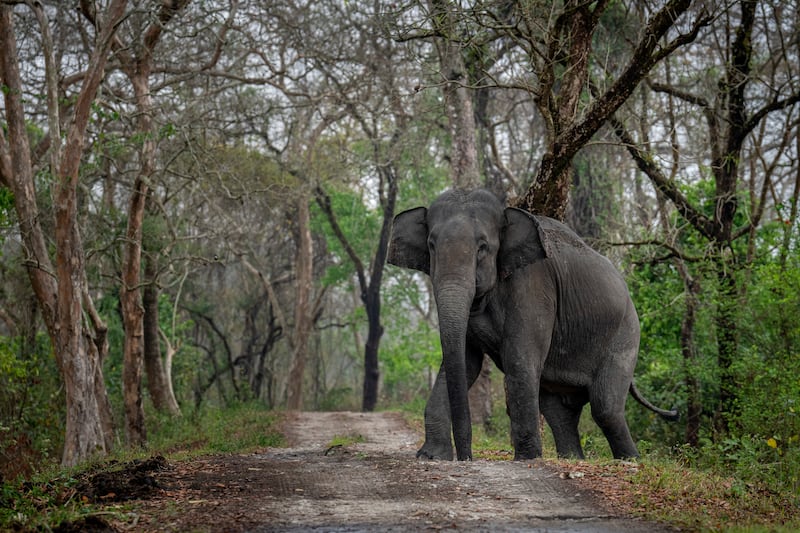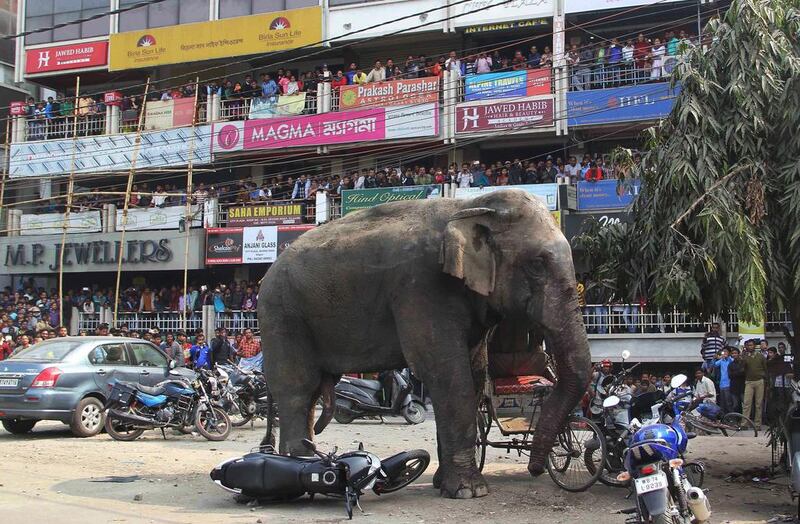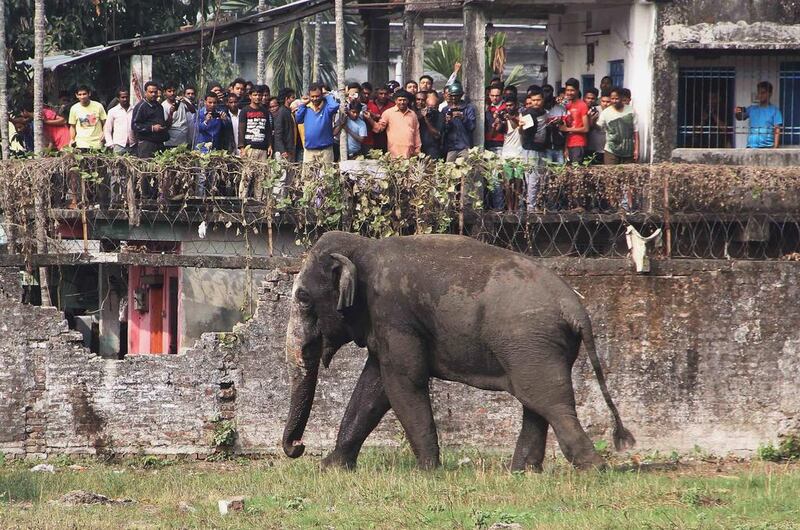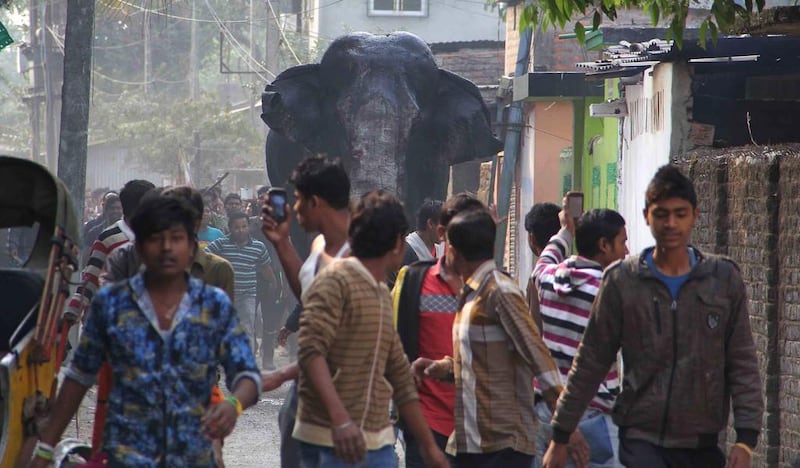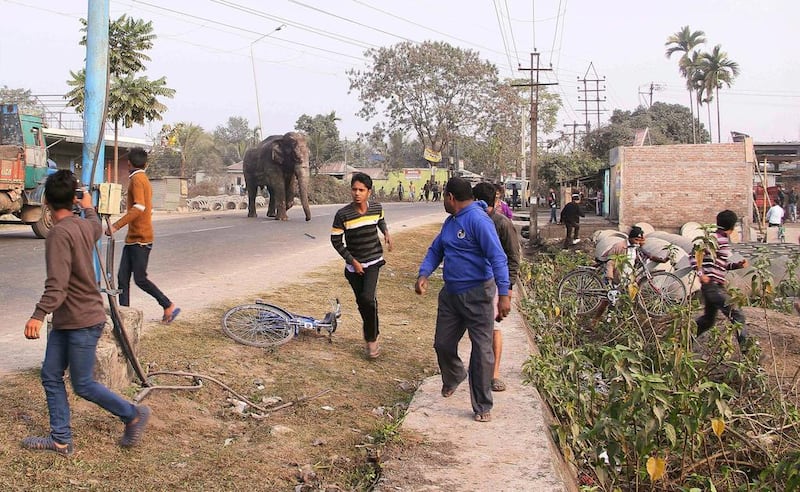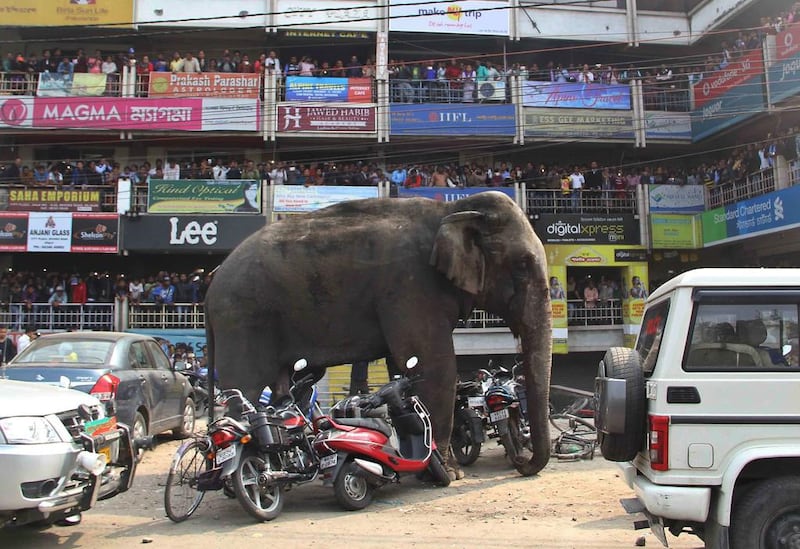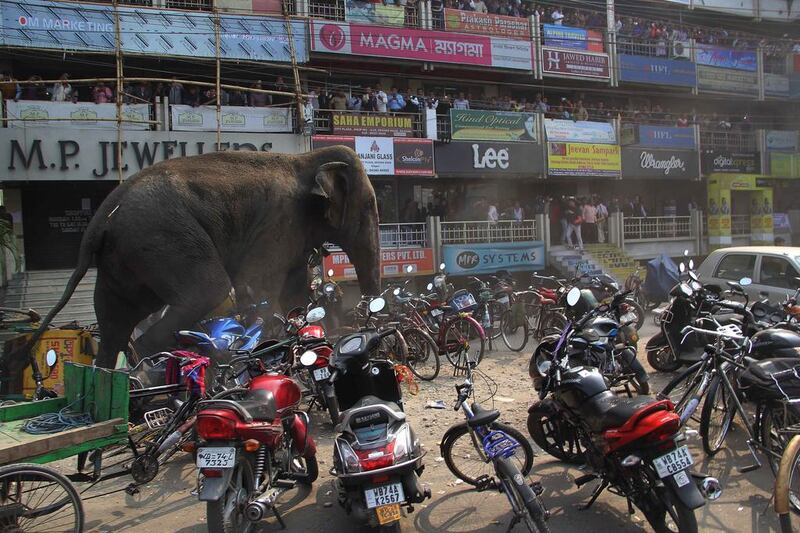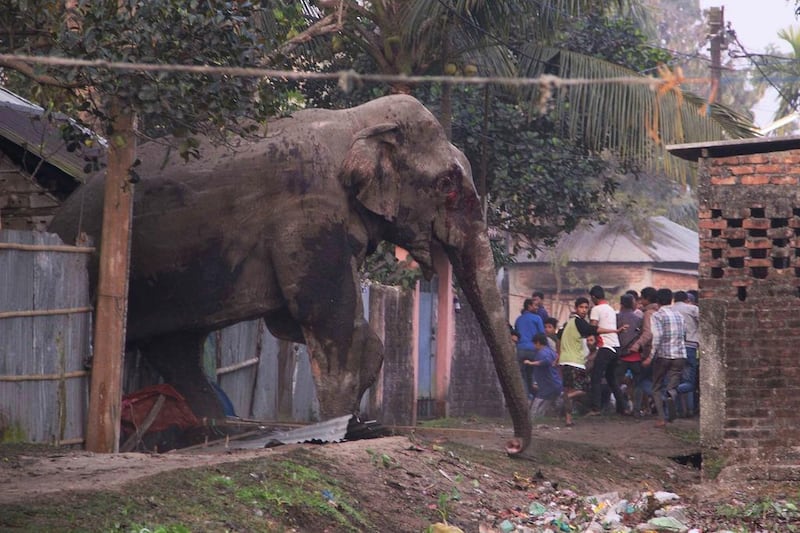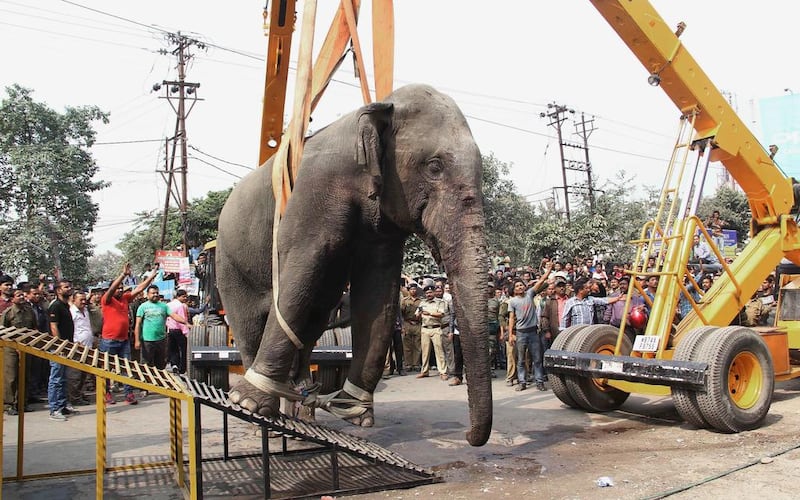An elephant trampled to death an elderly woman in India’s eastern state of Odisha and then returned to trample her corpse on the pyre.
The incident took place in Raipal village in Mayurbhanj district on Saturday morning when 70-year-old Maya Murmu was fetching water from a tube well.
The wild animal is believed to have strayed from the Dalma Wildlife Sanctuary, about 200 kilometres from the village.
Murmu was rushed to a hospital by local people but could not recover from her injuries, police said.
For the bereaved family, the agony did not end there.
As they gathered for her funeral in the evening, the animal suddenly appeared and charged at the pyre and trampled her corpse.
The animal did not harm or attack anyone in the crowd.
“Her family kept the body outside the house for the funeral where the animal again came and attacked her,” Inspector Lopamudra Nayak of Rasgovindpur police station told The National.
Gentle giants
Although generally considered gentle giants, elephant attacks on humans have risen in India in recent decades.
As many as 3,300 people have been killed in attacks by wild elephants in the country in the last seven years, according to government data.
Odisha has suffered the most deaths, with nearly 600 killed between 2014-2021.
At least four people were killed last week in different incidents in the country.
India is home to the world’s largest population of Asian elephants, a species listed as endangered as their population has declined sharply over the years.
India has nearly 27,000 elephants in the wild, according to the last survey conducted in 2017. The numbers are declining amid shrinking forest areas, encroachment of habitats and poaching.
Various state governments are making extensive efforts to curb human-elephant encounters by tagging the animals with radio collars to alert locals of their movement, and raising awareness through campaigns which give tips on dealing with the animals if encountered.
